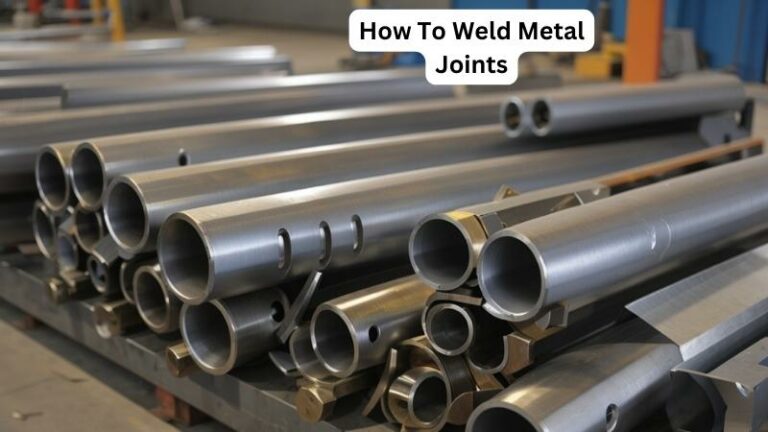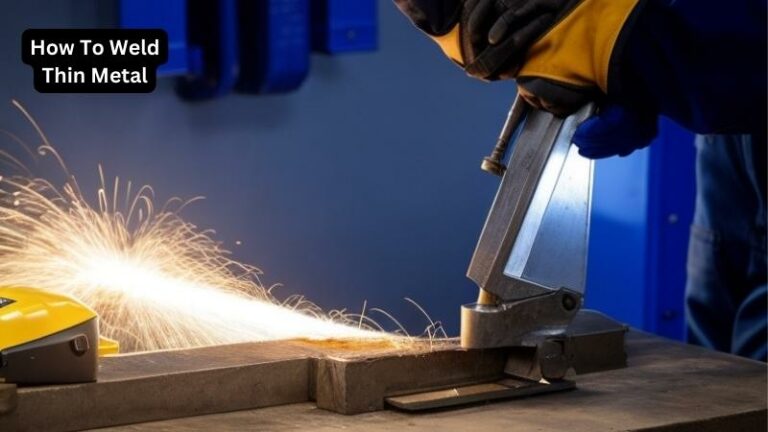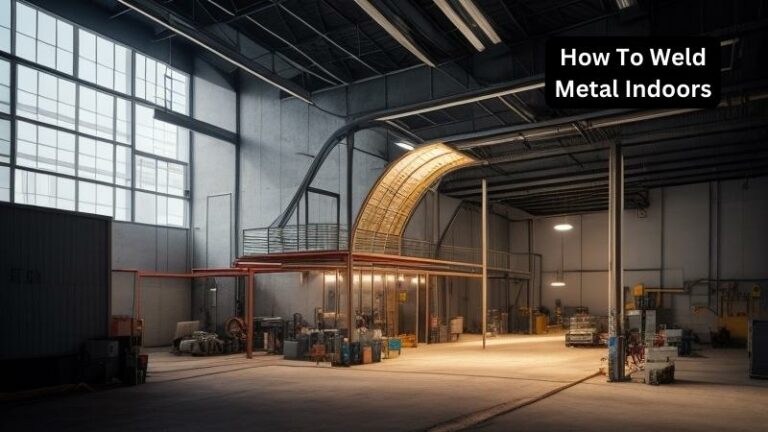How To Prevent Weld Distortion
Today we discuss How To Prevent Weld Distortion. Distortion might sound like a fancy word, but it simply refers to the unwanted changes in the shape or dimensions of a welded metal piece. When you’re welding, the intense heat applied to the metal can cause it to expand and contract, leading to deformations. We don’t want that, do we?
But fear not, young engineer! There are a few tricks of the trade that can help you prevent weld distortion and ensure your welds stay strong and true. So let’s dive in and discover some practical techniques to keep your welds distortion-free!
How to Prevent Weld Distortion:
Weld distortion is a common challenge faced by welders in various industries. It refers to the undesirable changes that occur in the shape and dimensions of a welded joint during the welding process. These distortions can compromise the integrity and strength of the weld, leading to functional issues and potential safety hazards.
Fortunately, there are several effective techniques and strategies to prevent weld distortion. In this article, we will delve into seven key aspects of preventing weld distortion, providing you with valuable insights and practical tips to ensure high-quality and distortion-free welds.
The Importance of Proper Welding Technique
Proper welding technique is crucial in preventing weld distortion. The choice of welding process, joint design, and filler material all play significant roles in determining the level of distortion. One effective strategy is to use a welding technique that minimizes heat input, such as pulsed MIG welding or TIG welding. These processes allow for precise control of heat, reducing the risk of excessive heat affecting the surrounding base metal.
Another important consideration is the joint design. A well-designed joint ensures proper fit-up and allows for effective heat dissipation, reducing the likelihood of distortion. Besides, selecting the right filler material for the weld is essential. Using a filler material with a similar coefficient of expansion to the base metal can help minimize distortion by reducing the differential thermal contraction and expansion during cooling.
Preheating and Post-Weld Heat Treatment:
Preheating the base metal before welding can significantly reduce the risk of distortion. This process involves heating the material to a specific temperature range to eliminate moisture, reduce residual stresses, and improve the weldability of the metal. Preheating is particularly beneficial for high-carbon steels, thick materials, and joints with high restraint.
Post-weld heat treatment (PWHT) is another effective method for preventing distortion. This process involves heating the welded joint to a specific temperature and holding it for a certain duration before gradually cooling it. PWHT helps relieve residual stresses and redistributes them more evenly throughout the welded component, thereby minimizing the potential for distortion.
Clamping and Fixturing Techniques:
Proper clamping and fixturing of the workpieces can significantly minimize weld distortion. Clamping the parts securely in the correct position helps maintain proper alignment and fit-up, allowing for a more controlled heat input during welding. When clamping, it is important to consider the sequence in which the welds are performed, ensuring that the component remains stable and distortion-free.
Using fixtures and jigs is another effective technique. These tools provide support and hold the workpieces in the desired position during welding, reducing the risk of distortion. Fixtures and jigs can be custom-made or purchased commercially, depending on the specific application and requirements. Their proper utilization can save time, improve weld quality, and ultimately prevent distortion.
Filler Metal Selection:
Choosing the right filler metal is crucial in preventing weld distortion. Selecting a filler metal with low shrinkage characteristics can help minimize the differential thermal contraction and expansion during cooling, reducing the risk of distortion. Additionally, filler metals with higher ductility and lower crack susceptibility contribute to better weld quality, improving resistance to distortion.
It is also important to consider the chemistry and mechanical properties of the filler metal. Matching the chemical composition and strength of the filler metal to the base metal helps ensure compatibility and reduces the risk of weld failure or distortion. Consultation with welding suppliers, engineers, or metallurgists can provide valuable guidance in selecting the appropriate filler metal for your specific welding application.
Back Purging and Shielding Gas:
Proper gas shielding is essential in preventing weld distortion. The use of inert gases, such as argon or helium, helps protect the weld pool from atmospheric contamination and excessive oxidation, ensuring a clean weld with minimal distortion. Selecting the appropriate flow rate and coverage area of the shielding gas is crucial to achieving optimal protection and minimizing the risk of distortion.
Back purging, a technique used primarily in pipe welding, involves introducing inert gas to the backside of the weld joint. This creates a protective barrier on the backside of the weld, preventing oxidation and reducing the risk of distortion. Back purging is particularly effective for welding materials prone to sensitivity to oxidation, such as stainless steel and titanium.
Controlling Heat Input:
Controlling heat input is vital in preventing weld distortion. Excessive heat can cause significant stresses in the base metal and surrounding areas, leading to distortion. One effective technique is to employ intermittent or pulsing welding methods that allow for controlled heat input and cooling cycles. These methods help minimize the amount of heat transferred to the base metal, reducing the risk of distortion.
Besides, controlling the travel speed and welding parameters, such as current, voltage, and wire feed speed, plays a crucial role in managing the heat input during welding. Following the recommended welding procedures and maintaining consistent parameters throughout the welding process can help prevent excessive heat buildup and the associated distortion.
Minimizing Residual Stresses:
Residual stresses are a common cause of weld distortion. These internal stresses result from the non-uniform heating and subsequent cooling during the welding process. To minimize residual stresses, several techniques can be employed. One such technique is the use of groove welding, which involves creating a groove or V-shaped cut in the joint, allowing for greater flexibility and accommodating the contraction and expansion during cooling.
Another effective method is to perform a stress-relieving process after welding. Stress-relieving involves heating the welded component to a specific temperature and allowing it to cool slowly, relieving residual stresses and minimizing distortion. It is essential to carefully follow the recommended temperature and cooling rates to achieve the desired stress relief without causing additional deformation.
Additional Strategies:
Using Welding Fixtures and Clamps:
Welding fixtures and clamps are invaluable tools in preventing weld distortion. By securely holding the workpieces in place and maintaining proper alignment, these fixtures and clamps reduce the risk of movement and distortion during the welding process. Custom-made fixtures or commercially available options can be utilized, depending on the specific application and requirements.
Ensuring Proper Fit-Up and Alignment:
Proper fit-up and alignment of the workpieces are crucial for preventing weld distortion. Ensuring that the parts are properly aligned, with tight joints and minimal gaps, helps distribute the thermal energy evenly during welding, reducing the risk of distortion. Careful preparation and inspection of the joint surfaces, as well as appropriate tack welding, contribute to achieving proper fit-up and alignment.
Implementing Welding Sequence Planning:
Planning the welding sequence in advance can help minimize distortion. Starting from the center and working outward, or alternating sides during multi-pass welding helps maintain symmetry and reduces the risk of localized distortion. Controlling the cooling rate of the welds by allowing ample time for intermediate cooling between passes can also contribute to distortion prevention.
Summary:
In conclusion, preventing weld distortion is essential for ensuring high-quality and reliable welds. By implementing proper welding techniques, preheating and post-weld heat treatment, clamping and fixturing techniques, selecting the appropriate filler metal, controlling heat input, and minimizing residual stresses, weld distortion can be effectively minimized or eliminated. Additionally, utilizing welding fixtures and clamps, ensuring proper fit-up and alignment, and implementing careful welding sequence planning are valuable strategies in preventing distortion. By following these guidelines and continuously improving your welding practices, you can achieve distortion-free welds and maintain the integrity of your welded components.
Key Takeaways: How To Prevent Weld Distortion
- Choose an appropriate joint design to distribute heat evenly.
- Use proper welding techniques to minimize heat input.
- Preheat the metal before welding to reduce thermal stress.
- Control the cooling rate by using heat sinks or slow cooling methods.
- Use clamps or fixtures to minimize distortion during welding.
faqs for How To Prevent Weld Distortion:
Weld distortion occurs when the welding process introduces heat to the metal, causing it to expand. As the metal cools down post-welding, it contracts and may result in distortions.
Factors such as welding techniques, material selection, and joint design play a role in the amount of distortion. Inadequate weld preparation, improper welding sequence, or use of incorrect heat inputs can also contribute to weld distortion.
To prevent weld distortion, it’s important to carefully plan and prepare your welding project. Use proper joint design and alignment techniques, and ensure that the metal is clean and free from any contaminants.
Minimizing weld distortion involves a few key strategies. First, it’s important to control heat input. Using a low heat input helps minimize the amount of expansion and contraction that occurs during welding, thus reducing distortion. You can achieve this by using smaller weld beads, shorter welding arcs, and intermittent welding techniques.
Another effective method is preheating the material. Preheating reduces the temperature differential between the base metal and the weld zone, which can help minimize distortion.
Yes, there are specific welding techniques that can help prevent distortion. One common technique is tack welding. Tack welding involves making small welds at various points to temporarily hold the joint in place. This helps ensure alignment and reduces the risk of distortion during the final welding process.
Another technique is using a backstep sequence. Instead of welding continuously in one direction, you weld in short steps or in reverse order. By moving back and forth, you evenly distribute heat and minimize the risk of distortion. It’s important to note that the specific welding technique to use depends on the type of joint, material, and welding process you are using.
Yes, material selection can have an impact on weld distortion. Different materials have different thermal expansion coefficients, which means they expand and contract at different rates when subjected to heat. Materials with a high thermal expansion coefficient, such as aluminum, are more prone to distortion compared to materials with lower coefficients, like steel.
When selecting materials for your welding project, consider factors such as the material’s thermal expansion coefficient and its compatibility with the welding process. Choosing materials with similar coefficients and proper compatibility can help minimize the risk of distortion during welding.
Yes, there are post-welding techniques you can use to correct distortion to some extent. One such technique is heat straightening. It involves applying controlled localized heat to the distorted area and then using external forces to straighten the metal.
However, it’s important to note that this technique may not be applicable to all types of distortion or in all situations. It is best to consult a qualified professional or welding engineer for guidance on post-welding distortion correction techniques.
Welding Distortion Tips for Keeping it Square
Summary:
Weld distortion is a common problem, but there are strategies to prevent it. Firstly, using proper welding techniques such as controlling heat input and minimizing the number of weld passes can help reduce distortion. Secondly, using fixtures and jigs to hold the workpiece in place during welding can prevent movement and distortion. Additionally, selecting the right welding process and filler material for the specific application can minimize distortion. Lastly, post-welding processes like heat treatment or stress-relieving can be employed to relieve residual stresses and prevent distortion.
In conclusion, by employing these strategies, welders can effectively prevent distortion and ensure quality welds. Remember, practicing proper welding techniques, using fixtures, selecting the right materials, and employing post-welding processes are key to successful welding with minimal distortion.


